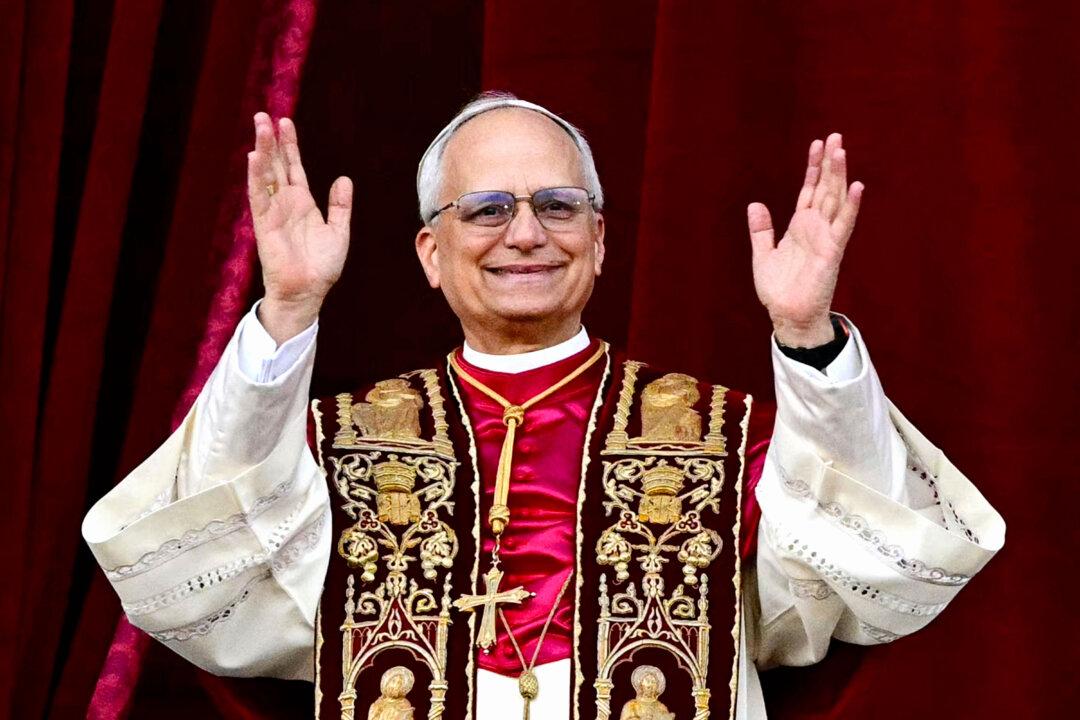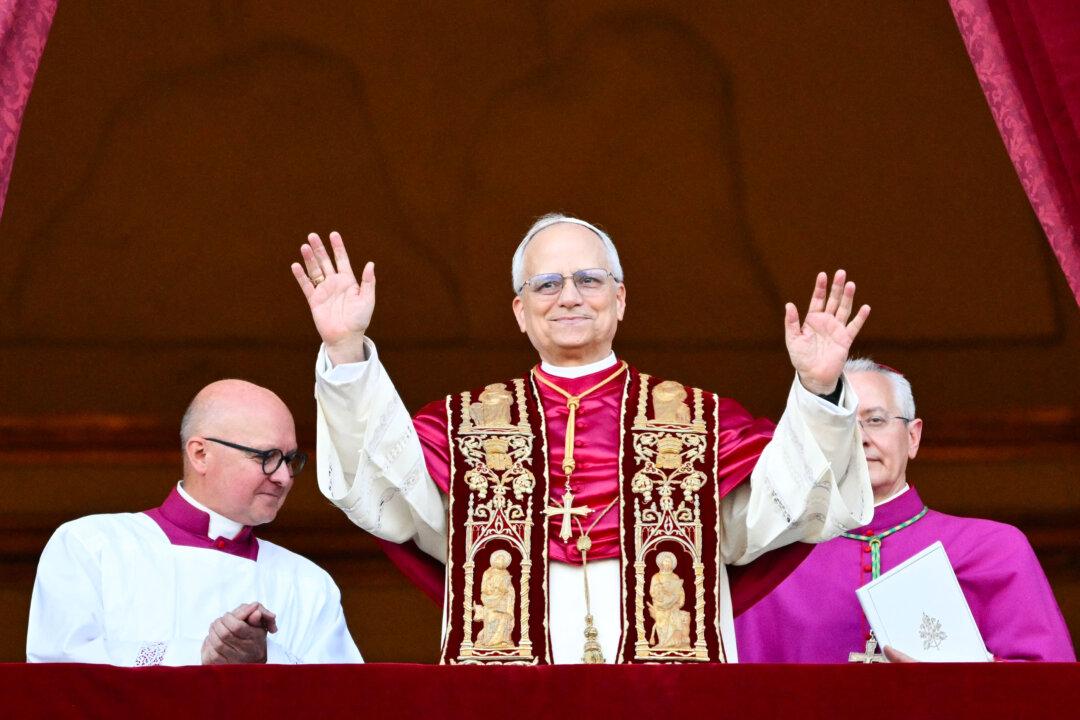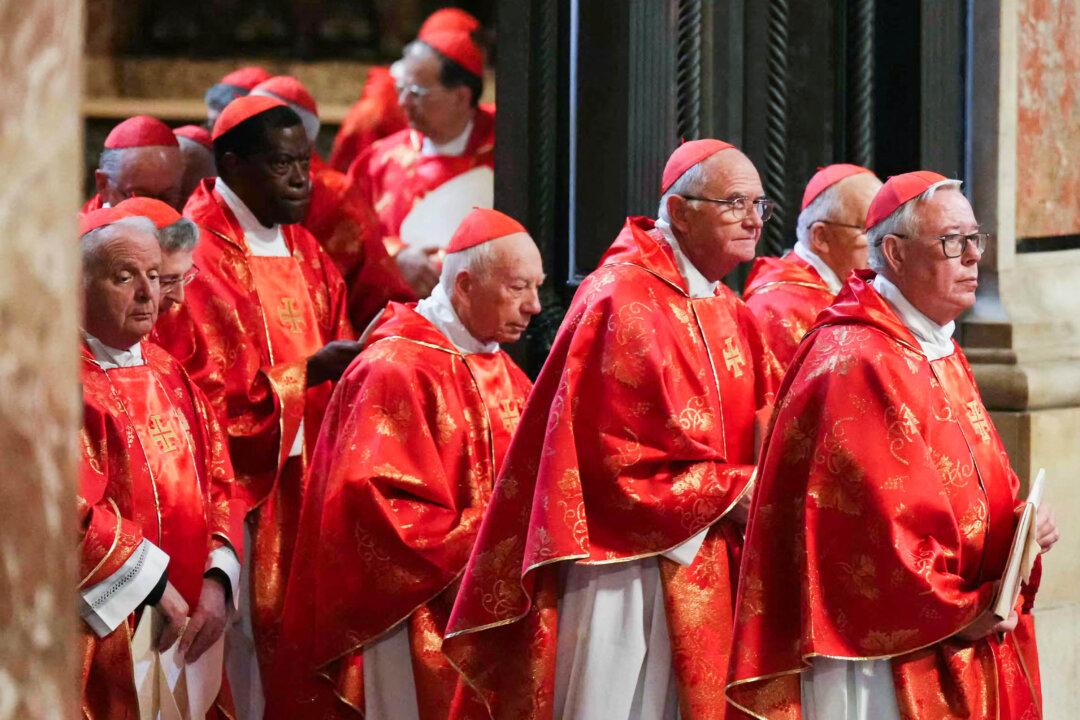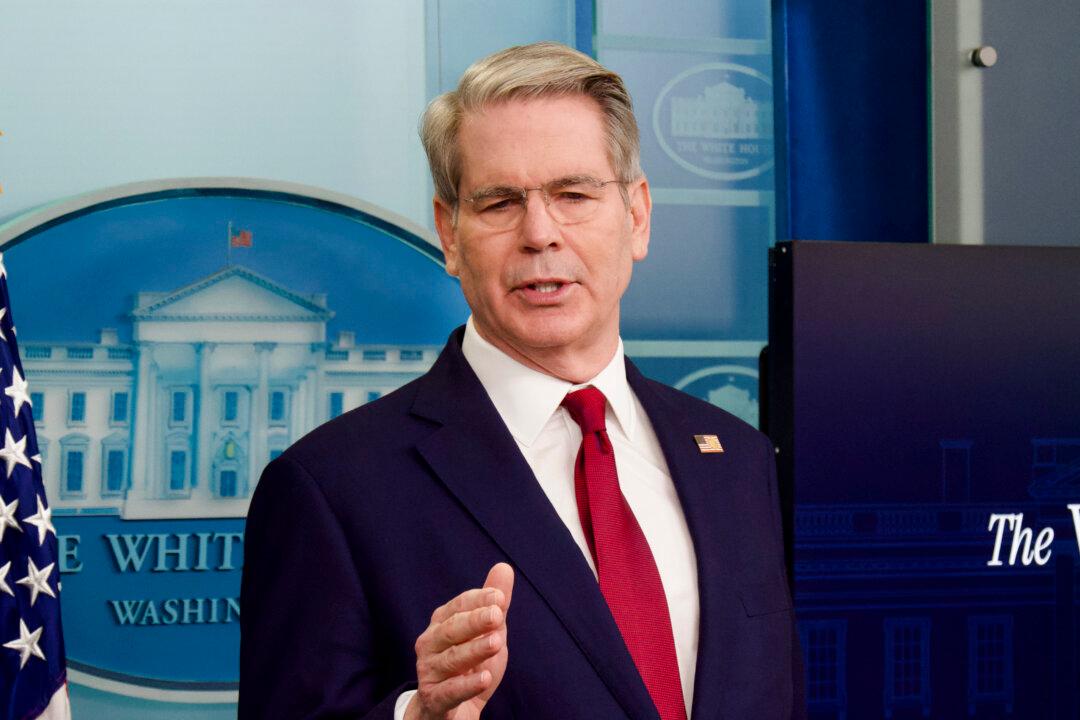Cardinal Robert Francis Prevost, 69, was elected pope on May 8, becoming Pope Leo XIV.
The Chicago-born prelate is the first American to be raised to the highest position in the Catholic Church.
He began his pastoral career as an Augustinian missionary in 1985 and served communities in South America for more than a decade, working in the Peruvian cities of Chulucanas and Trujillo.
He was ordained bishop in 2014 and appointed to the diocese of Chiclayo, Peru, in 2015.
He was appointed prefect of the Dicastery of Bishops—the Vatican office that assigns bishops around the world—by Pope Francis in January 2023. He was made a cardinal in September 2023.
Born and Raised in America
Leo is from Chicago and has deep ties to the city.He was born on Sept. 14, 1955, to Louis Marius Prevost and Mildred Martinez Prevost. His father is of French and Italian descent, and his mother is of Spanish descent. He has two brothers, Louis and John.
For high school, he attended the minor seminary of the Augustinian fathers, which prepares young men for the priesthood, and he graduated in 1973.
After high school, Leo moved to Pennsylvania for undergraduate studies at Villanova University. He graduated in 1977 with a Bachelor of Science degree in mathematics and also studied philosophy at the university.
After Villanova, Leo returned to the Midwest to complete his novitiate—a period before ordination to acquaint trainees with religious life.
He then returned to Chicago for graduate school, attending the Catholic Theological Union and receiving a Master of Divinity degree in 1982 at the age of 27.
In 1982, Leo left Chicago for Rome. He was ordained as a priest in 1982 and received a licentiate in 1984 and a Doctorate of Canon Law in 1997, both from the Angelicum—the Pontifical College of St. Thomas Aquinas.
After his ordination, Leo returned several times to the Chicago area, in between years of pastoral service in Peru.
Upon receiving his doctorate, he was sent back to Olympia Fields, Illinois—a suburb of Chicago—to serve as missions director for the Augustinian order’s Midwest province. He spent one year in the role before returning to Peru.
In 1999, after several years in Latin America, he was appointed provincial prior of the Midwest province. In 2001, he was elected prior general of the order, and he was confirmed for a second term in 2007.
After another departure, he returned to Chicago again in October of 2013 to serve as provincial vicar and first councilor for the order.
A year later, in December 2014, Francis elevated him to the rank of bishop and sent him once again to Peru, where he served as bishop until 2023.
On May 8, the new pope addressed the people gathered in St. Peter’s Square and the faithful around the world, speaking Latin, Italian, and Spanish; he chose not to speak his native English.
Pope Leo XIV
The newly elected pontiff chose the papal name Leo, becoming the 14th pope to do so in the history of the Roman Catholic Church.Pope Leo XIII, who reigned from 1878 to 1903, was known for standing firm against moral relativism. He’s considered the father of Catholic social teaching.
Leo XIII’s 1891 encyclical Rerum Novarum set the church’s position on social justice in a time of rapidly advancing technology during the Industrial Revolution, and it affirmed the church’s ability to make moral pronouncements on social issues.
The original Pope Leo, Pope St. Leo I, was elected pope by a rare unanimous decision in 440. He was known for his fierce defense of theological doctrine and is credited with helping to overthrow the heresy of Pelagius, who claimed that man can be made perfect without God.
St. Leo I was also credited for standing down Atilla the Hun, who was advancing across Europe. According to the story, while Leo appeared in humble submission, Atilla saw the apostles Peter and Paul above him wielding flaming swords, backed by an army 10,000 times greater than his own. The pope’s plea was received as a command, and Atilla swore to a truce and moved his army across the Danube.
A Pope Francis Ally
In 2023, after eight years as bishop of Chiclayo, Leo was called by Francis to serve in the Roman Curia, the Catholic Church’s spiritual and administrative governing body.Francis raised him to the rank of archbishop and appointed him prefect of the dicastery of bishops, an influential role in which he oversaw the appointment of Catholic bishops.
There, Leo was responsible for screening candidates to serve as the church’s leaders in dioceses across the world and making recommendations to Francis.
Before elevating him to the rank of Cardinal, Francis named Leo president of the Pontifical Commission for Latin America, a body that examines spiritual questions in the region and makes recommendations for the Latin American church.
However, in a statement in October 2024, he supported African bishops who pushed back against Francis’s 2023 document Fiducia Supplicans, which allowed priests to bless same-sex couples.
And as bishop of Chiclayo, he opposed the implementation of school programs that taught gender ideology.
“The promotion of gender ideology is confusing, because it seeks to create genders that don’t exist,” he told reporters.
Leo also expressed similarities to his predecessor in his opening address on May 8, specifically in his devotion to the Blessed Virgin Mary and in his message that the Catholic Church needs to be a bringer of peace to the world and be welcoming to everyone.
“God loves you all,” he said in his first papal address.
“And evil will not prevail. We are all in the hands of God.”









